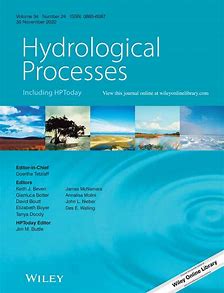Massive expansion of sex-specific SNPs, transposon-related elements, and neocentromere formation shape the young W-chromosome from the mosquitofish Gambusia affinis
The mosquitofish Gambusia affinis, globally introduced to fight mosquitos, is a threat for freshwater ecosystems and a model for sex chromosome evolution. Cyto-/genomics reveals a neocentromere to shield parts of its evolutionary young female sex chromosome (W) that actively differentiates by expansion of transcribed transposons, while major sequence divergence or gene decay are missing.
Particle-associated organic contaminant and cytotoxicity transport in a river during storm events
This study investigated the mobilisation and transport of particle-associated organic contaminants and their cytotoxicity in a river during storm events. Cytotoxicity determined in cell-based bioassays correlated linearly with total suspended solids concentration in a river, demonstrating that particle-associated contaminant mixtures can strongly affect river water quality during rain events.
Habitability of Polygonal Soils in the Hyper-Arid Atacama Desert After a Simulated Rain Experiment
The dryness in the Atacama Desert led to fracture networks of salt-poor sand wedges outlining salt-rich polygons as potential microbial habitats. Mineral composition, pH, electrical and thermal conductivity, water activity and content were analyzed for their relevance to habitability. The results emphasize the relevance of polygonal networks as microbial habitats in extreme environments.
Moving Bedforms Control CO2 Production and Distribution in Sandy River Sediments
The study investigated the impact of streamwater flow velocities and the resulting bedform migration on the CO2 production in streambeds. State-of-the-art 2-dimensional imaging techniques reveal the CO2 distribution in the streambed, an increasing CO2 production in the upper sediment and a decreasing hydrological exchange with deeper sediment layers, with increasing flow velocities.
A synthesis of biological invasion hypotheses associated with the introduction–naturalisation–invasion continuum
Empirical studies show divergent impacts of alien populations on ecosystems which hinders the creation of a unified theory. The authors propose a synthesis that categorizes hypotheses along a timeline of invasion considering population, community and ecosystem levels. For any given case study, this framework provides a guide to choose the appropriate concepts according to the stage of invasion.
Oxygen depletion and sediment respiration in ice-covered arctic lakes
The study investigated the oxygen budget of 4 arctic lakes using high-frequency data. Incubation experiments measured sediment metabolism. Volume-averaged oxygen depletion in situ was independent of water temperature and duration of ice-cover. Modeling under ice-oxygen dynamics requires consideration of optical properties, biological and transport processes modifying oxygen.
Short-term effects of macrophyte removal on aquatic biodiversity in rivers and lakes
Study of the effects of macrophyte removal on phytoplankton, zooplankton and macroinvertebrates at five sites with highly variable characteristics repeating the same Before-After-Control-Impact design to disentangle general from site-specific effects. Macrophyte removal had negative effects on biodiversity, esp. on zooplankton and macroinvertebrates. It had positive effects on phytoplankton.
California sea lions interfere with striped marlin hunting behaviour in multi-species predator aggregations
Sea lions benefit as kleptoparasites of striped marlin hunts: These predators take advantage of the marlin's ability to locate prey and force it to the surface. The sea lions are more successful in their attacks than the marlins and dominate access to the prey school, making it difficult for the marlin to make their attacks.
Tracer-aided ecohydrological modelling across climate, landcover, and topographical gradients in the tropics
This study applied a tracer-aided ecohydrology model in a data-scarce tropical catchment, using the output of climate models to estimate spatio-temporal dynamics of how water is partitioned, stored and transported at larger spatial scales. This provided a basis for projecting future climate and vegetation changes and the impact on regional hydrological and biogeochemical cycles.
A database of freshwater macroinvertebrate occurrence records across Cuba
the researchers have set up a database with geo-referenced occurrence records of four groups of freshwater invertebrate taxa across Cuba. Detailed knowledge of the spatial distribution of freshwater species is an important basis for monitoring changes in aquatic ecosystems.










